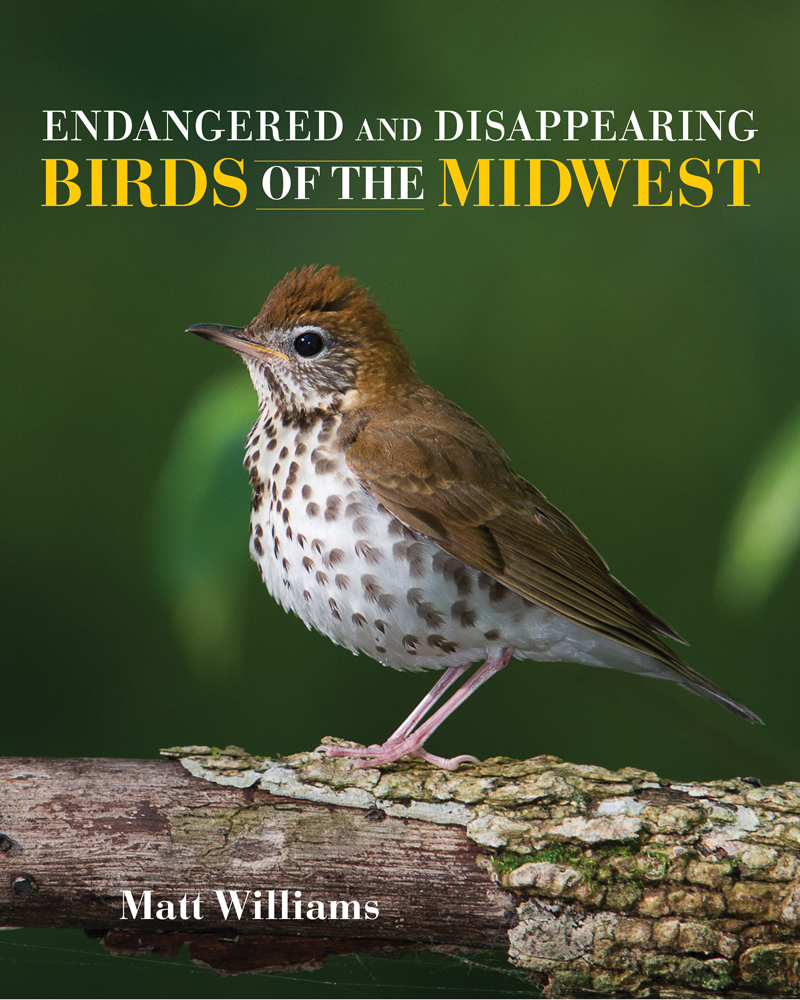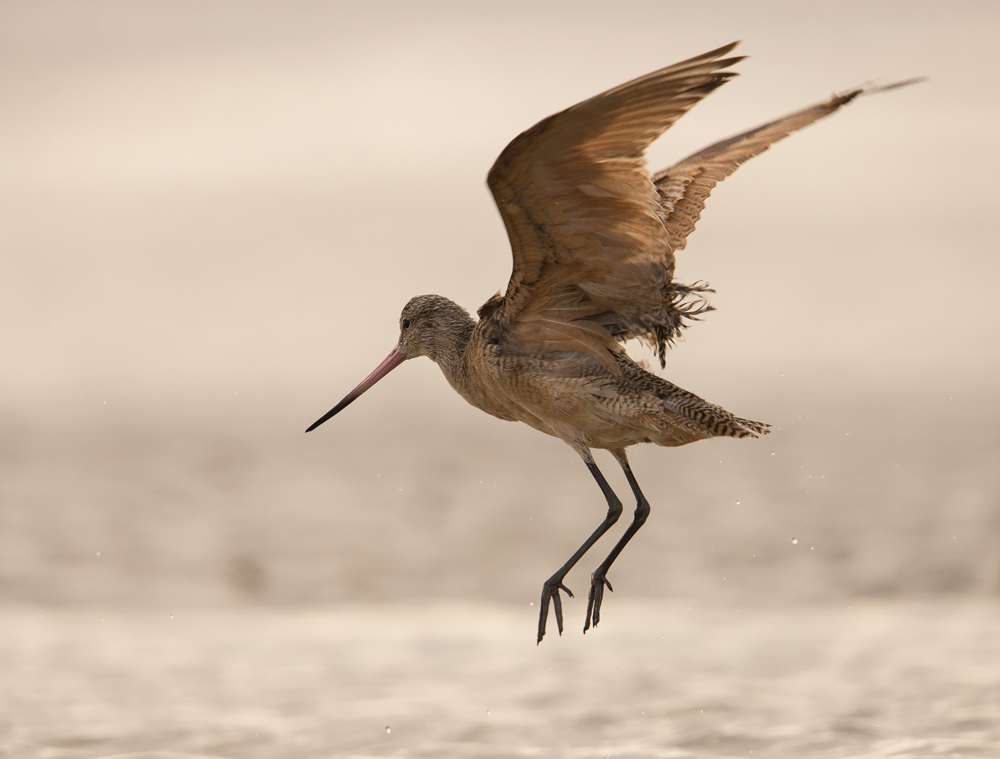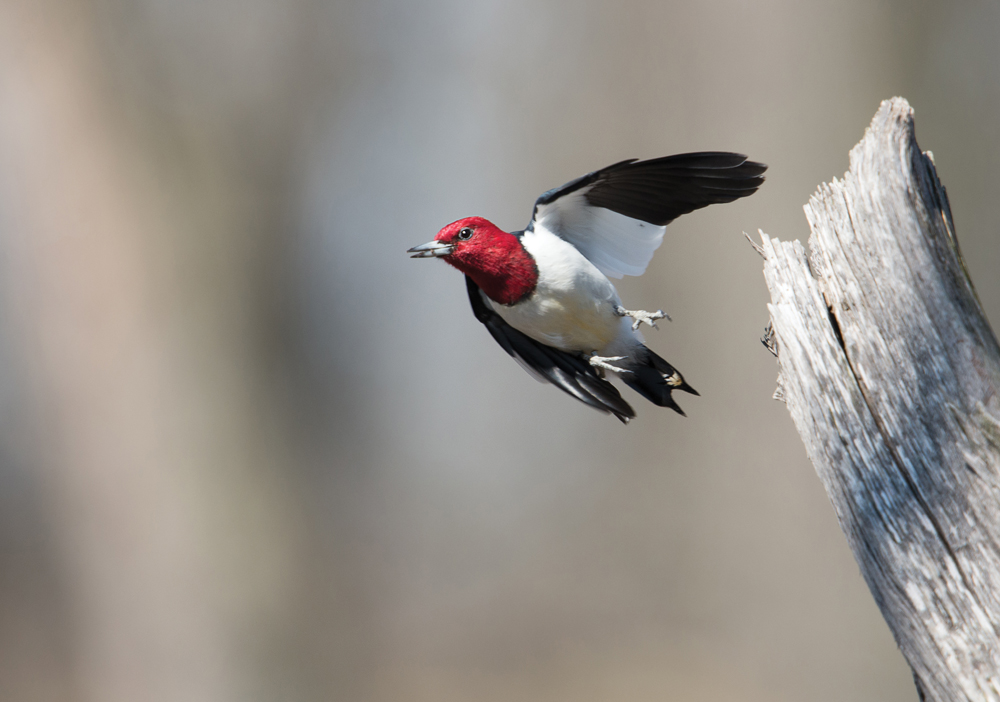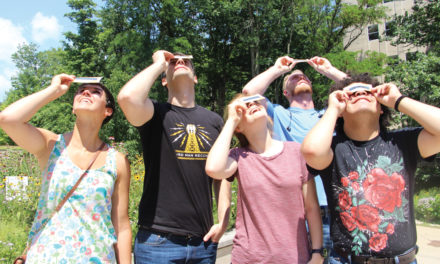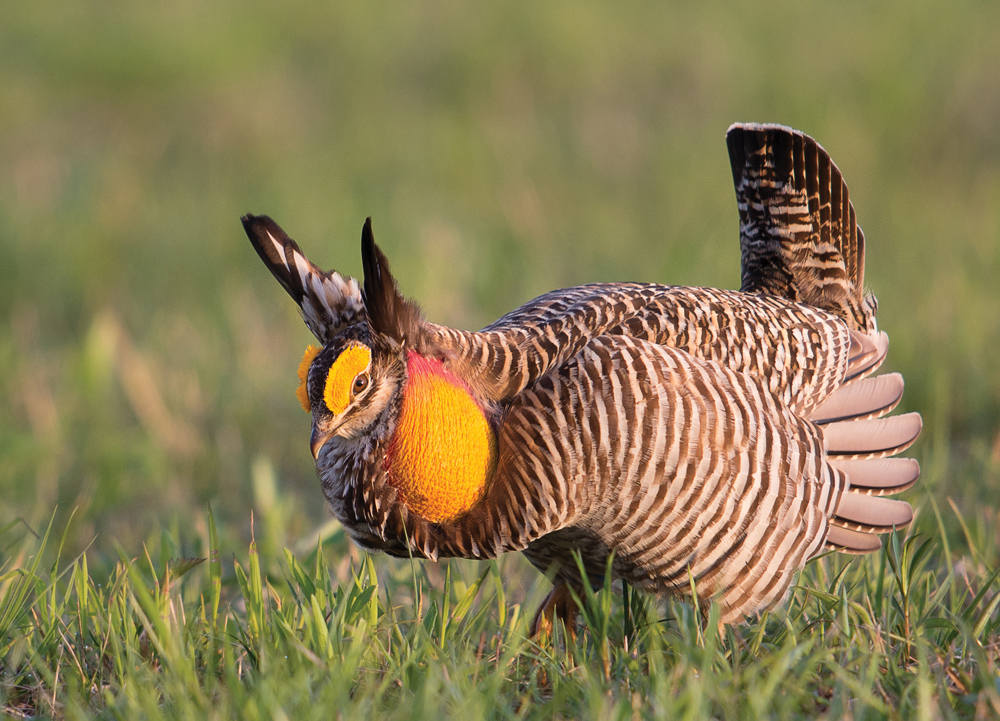
Greater prairie-chicken. Photos by Matt Williams from Endangered and Disappearing Birds of the Midwest. Provided courtesy of Indiana University Press
BY JULIE GRAY
Through gorgeous photos and graceful prose, the new IU Press book Endangered and Disappearing Birds of the Midwest encourages readers to become not just bird watchers but bird protectors.
Author and photographer Matt Williams writes, for example, of the yellow-billed cuckoo, “slow as a sloth” as it motionlessly perches in a tree, hoping to surprise a caterpillar. In contrast, the male American woodcock performs a dramatic “sky dance,” rising as high as 350 feet in the air before plunging back to earth.
Williams is just as attentive to birdsong, praising the “melancholy, chorded, flutelike song” of the wood thrush. With a dual-chambered voice box, it can sing two different notes at once. And he explains mysteries, such as why the whooping crane can whoop. It’s because of a trachea that is 5 feet long.
Director of Conservation Programs at the Nature Conservancy, Williams makes a strong case for the preservation of the 40 species included in his book, offering migration maps and descriptions of each bird’s vocal and nesting patterns. He explains that birds pollinate crops and control the insects that threaten not just our food supply, but our health. And, because birding is so popular, Americans spend some $40 billion a year on birdseed, gear, and travel, making birds an important economic force.
In the end, though, our appreciation for birds, he says, comes down to the fact that “they are some of the most beautiful, engaging creatures on earth.” And that is reason enough to save them.
Check out our photo gallery to see some of the birds from the book. (Click on the photo below to start the slideshow. Use the on-screen arrows or the arrows on your keyboard to navigate forward and backward.)


